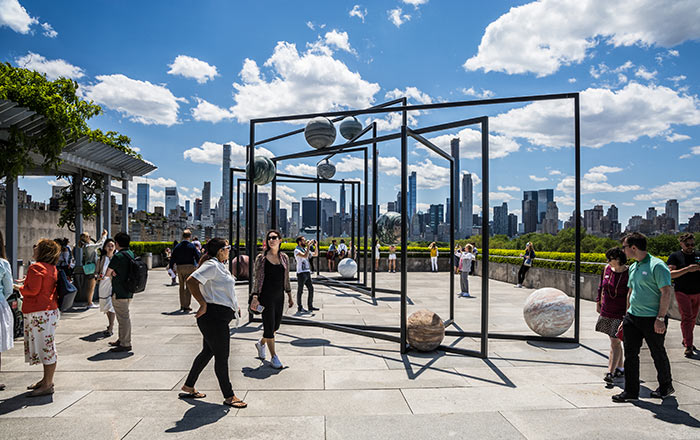Generation Wish Yielding Trees and Atomic Tree 31
Joydeb Roaja Bangladeshi
Not on view
Roaja belongs to the Tripura community, one of eleven Indigenous tribes situated in Southeastern Bangladesh’s Chittagong Hill Tracts. The artist became aware of his community’s marginalization from a young age when he was not able to participate fully in his primary education because, as he recalls, "my mother tongue was Kokborok, and all the textbooks were in Bangla." Despite being unable to understand most of the curriculum, he was exposed to the illustrations of Hashem Khan that pictured rural life in Bangladesh. Historically, representations of the Indigenous people of Bangladesh depict them as peaceful and nature loving, as in Khan’s illustrations. Roaja’s work is the first to depict their fraught reality and the violence with which they must contend. In 1997 the Chittagong Hill Tract Peace Accord was signed, but not implemented effectively, and Indigenous communities continued to lose their land in clashes with the military. The following year, Roaja began to document their dispossession in works that challenge stereotypical representations and assumptions about Indigenous people and their rural way of life. This is explicitly addressed in the ongoing series Generation Wish Yielding Trees and Atomic Trees. The woman portrayed here has been identified as Kalpana Chakma, a vocal human rights activist who is now presumed dead after being abducted by the Bangladeshi army in 1996.
This image cannot be enlarged, viewed at full screen, or downloaded.
